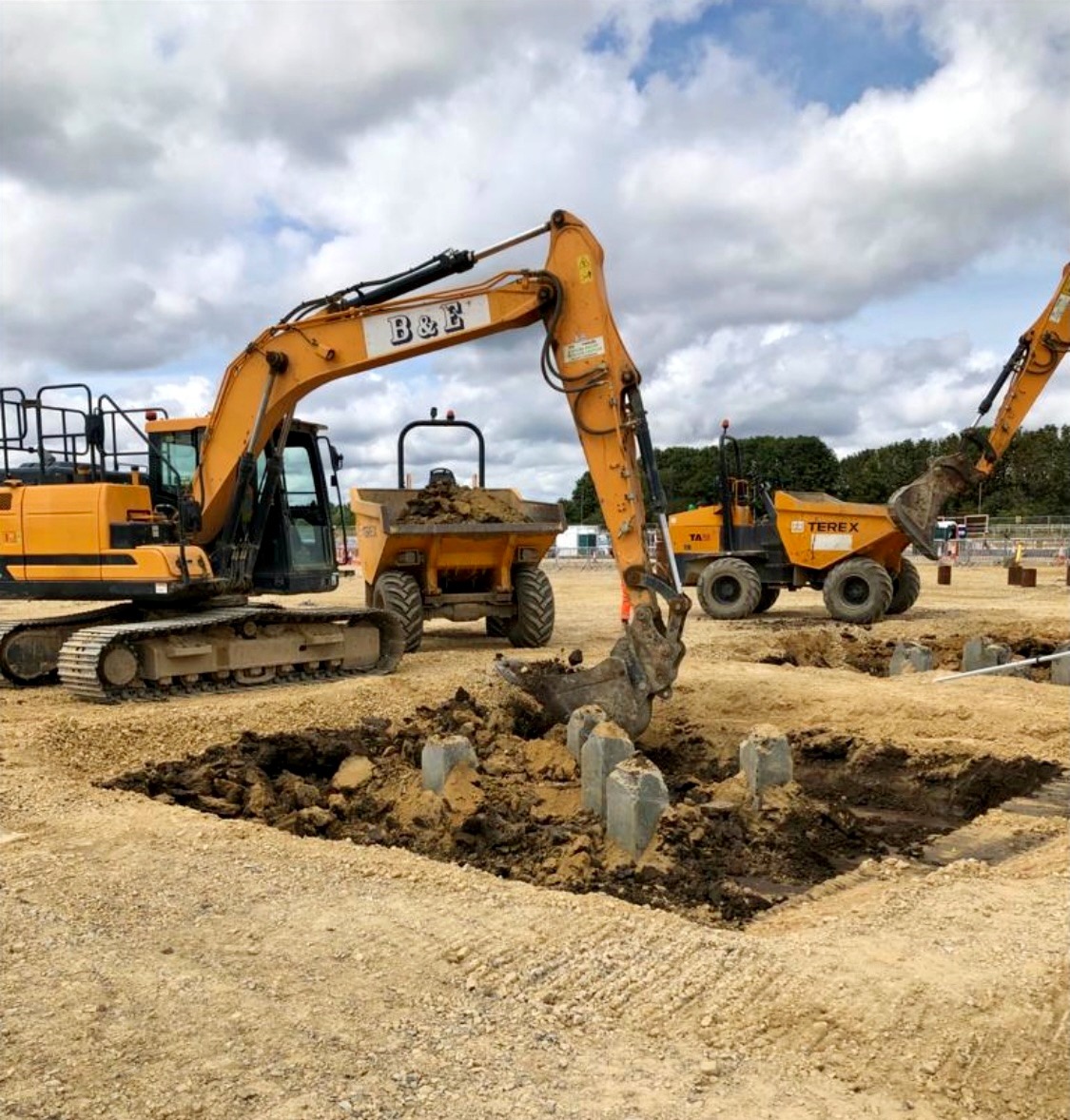

The structural design documents will specify the quantity of reinforcement, the grades of rebar to be used and the depth of concrete below the base reinforcement layer and above the top reinforcement layer. Ground beam reinforcement can use traditional rebar or mesh panels, and the choice of reinforcement products will depend on the depth of the beam and the area to be covered. Steel reinforcement works perfectly with concrete to produce a composite material that is able to resist both compressive forces and shearing forces. As we’ve discussed in other articles, concrete on its own has significant compressive strength, but it has relatively low tensile strength. Like most structural elements that are made of concrete, concrete ground beams require reinforcement in order to give them the tensile strength needed to withstand shearing forces. These beams can be stitched together to form a larger surface area, and can also be tied to the pile or pad foundations to secure them. Where pre-cast ground beams are used, these are delivered to site ready formed, and are lowered into place by crane. The concrete should then be left to go off for a minimum of 24 hours, before the formwork is removed. The concrete needs to be compacted and the top surface finished appropriately. Once everything is in position and the formwork has been checked for size, straight lines and watertightness, the concrete reinforcement should be positioned and tied into place, according to the construction design documents.Īt this point, pre-mixed concrete is poured into the formwork, ensuring complete and even coverage at all points. Once the site excavation has been completed and the pile or pad foundations are in place, formwork is positioned to enclose the entire ground beam area, according to the construction plans. Ground beams are made of reinforced concrete, which rests either directly on the soil or on concrete piles or pad foundations. This is an increasingly popular option, where time and access are tight. Whilst ground beams are very often poured in-situ, that isn’t an absolute necessity, and they can indeed be constructed off-site and then craned into position, for the fastest possible turnaround. Other benefits include time and cost savings, since ground beam construction is much faster than other types of foundation work, and it requires a lot less work in the levelling up stage of the process. Many ground beams are constructed on site, giving additional flexibility in difficult locations.

One key advantage of using ground beams instead of other types of foundation is that they can accommodate a wider variation in ground conditions than regular trench footings, making them ideally suited to sites where the terrain is patchy, or where access is restricted. Ground beams are a popular choice for housing plots of all sizes. Once it is laid and fully dried, the ground beam can support blockwork or brick walls, and in some cases, it can even be used to edge a concrete floor. Instead of strip or trench footings, a concrete slab, called a beam, is laid on top of piles or pad foundations. A concrete ground beam is often used in place of other foundation techniques such as concrete footings.


 0 kommentar(er)
0 kommentar(er)
